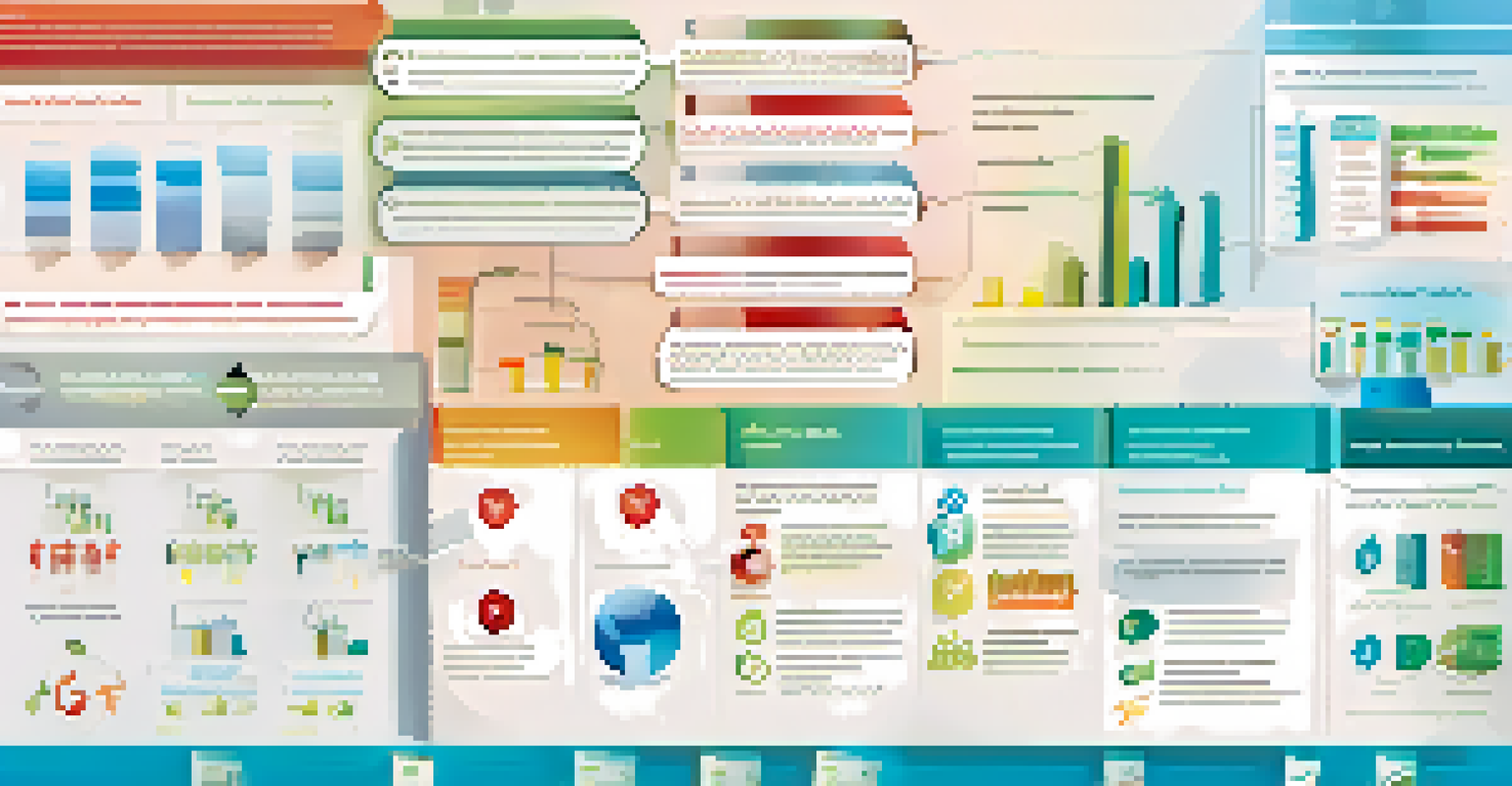The Role of Statistics in Clinical Trials and Health Studies

What Are Clinical Trials and Health Studies?
Clinical trials and health studies are essential research methods used to evaluate new treatments, drugs, or interventions. They help determine how effective a treatment is and identify any potential side effects. By rigorously testing hypotheses, these studies contribute to the advancement of medical knowledge and patient care.
Clinical trials are the cornerstone of evidence-based medicine, where the results of research translate into better patient care.
Think of clinical trials as a controlled experiment where researchers gather data to assess a new approach to treatment. Health studies can vary widely, from observational studies analyzing health trends to randomized controlled trials testing specific interventions. Both types of research rely heavily on statistics to ensure valid and reliable results.
Ultimately, these studies aim to improve healthcare outcomes, making the role of statistics crucial in translating raw data into meaningful conclusions that can benefit patients and healthcare providers alike.
The Importance of Statistical Design in Trials
Statistical design refers to the plan and methodology behind a clinical trial or health study. A well-structured design is vital for minimizing bias and ensuring that the results are trustworthy. This involves selecting appropriate sample sizes, defining control groups, and determining the best methods for data collection.

For example, consider a trial testing a new cancer drug. Researchers need to decide how many participants are necessary to draw valid conclusions. If the sample size is too small, the study may miss significant effects or produce misleading results. This highlights the importance of careful statistical design.
Clinical Trials Enhance Patient Care
Clinical trials and health studies rigorously evaluate new treatments, contributing to medical advancements and improved healthcare outcomes.
A strong design not only enhances the credibility of the findings but also supports the regulatory approval process, ultimately leading to better health outcomes for patients.
Data Collection Methods in Health Research
Data collection is a critical component of clinical trials and health studies, as the quality of data directly influences the reliability of findings. Various methods are employed, including surveys, interviews, medical records, and biometric measurements. Each method has its strengths and weaknesses, and the choice often depends on the study's objectives.
Statistics is the grammar of science.
For instance, randomized controlled trials may use clinical measurements to collect objective data on a treatment's efficacy. In contrast, observational studies might rely on self-reported questionnaires to gather information about lifestyle factors. Understanding these methods is essential for interpreting study results accurately.
Moreover, the integration of advanced technology, like electronic health records, has revolutionized data collection, making it more efficient and comprehensive than ever before.
Statistical Analysis: Turning Data into Insights
Once data is collected, statistical analysis comes into play. This process involves applying various statistical methods to interpret the data and draw conclusions. Techniques such as t-tests, chi-square tests, and regression analysis help researchers understand relationships between variables and determine the significance of their findings.
For example, if researchers find that a new medication significantly lowers blood pressure compared to a placebo, statistical analysis provides the evidence needed to support this claim. It quantifies the effect and assesses whether the results are likely due to chance or the treatment itself.
Statistical Design Ensures Trustworthiness
A robust statistical design minimizes bias and enhances the reliability of clinical trial results, supporting informed healthcare decisions.
In essence, statistical analysis transforms raw data into actionable insights, guiding healthcare decisions and policy-making.
The Role of Statistical Significance in Trials
Statistical significance is a key concept in determining whether the results of a clinical trial or health study are meaningful. It typically refers to the likelihood that the observed effects are not due to random chance. Researchers often use a p-value to quantify this probability, with a p-value of less than 0.05 commonly indicating statistical significance.
Imagine a scenario where a new treatment shows a slight improvement over existing options. Without statistical significance, it's challenging to conclude that this improvement is reliable and not just a fluke. Thus, understanding statistical significance is vital for making informed decisions about new treatments.
Ultimately, establishing statistical significance helps build confidence among stakeholders, including researchers, clinicians, and patients, in the findings of a study.
Interpreting Results: Beyond Numbers
Interpreting the results of clinical trials and health studies goes beyond just crunching numbers. It involves contextualizing the findings within the larger framework of existing research and clinical practice. Researchers need to consider factors like the study's limitations, potential biases, and how the results align with previous studies.
For instance, if a study finds that a new drug reduces symptoms of a disease, it's crucial to evaluate how this finding fits into the broader picture of treatment options available. Are the results consistent with previous studies? Do they apply to diverse populations? These questions help ensure that the research is relevant and applicable.
Future of Health Research is Data-Driven
Advancements in big data and machine learning are transforming health research, leading to more personalized treatments and better patient outcomes.
By thoughtfully interpreting results, researchers can provide valuable insights that inform clinical guidelines and ultimately improve patient care.
Challenges and Limitations of Statistical Methods
While statistics play a vital role in clinical trials and health studies, they come with their own set of challenges and limitations. Issues such as sample bias, measurement errors, and missing data can compromise the integrity of a study. Researchers must be acutely aware of these pitfalls and implement strategies to mitigate them.
For instance, if a study relies heavily on self-reported data, it may be subject to biases such as social desirability, where participants provide answers they think are more acceptable. Addressing these challenges requires a combination of robust study design and thorough statistical analysis.

Acknowledging and addressing these limitations is essential for maintaining the credibility of research and ensuring that conclusions drawn are valid and reliable.
The Future of Statistics in Health Research
The role of statistics in clinical trials and health studies is evolving rapidly, driven by advancements in technology and data science. The rise of big data and machine learning is opening new avenues for analysis that were previously unimaginable. These innovations hold the promise of enhancing the precision and effectiveness of health research.
For example, using machine learning algorithms can help identify patterns in large datasets that traditional statistical methods might overlook. This could lead to more personalized treatment approaches and improved patient outcomes.
As we look to the future, the integration of statistics with emerging technologies will likely continue to shape the landscape of health research, making it an exciting time for researchers and healthcare professionals alike.